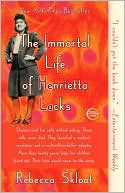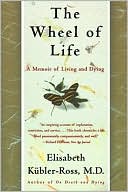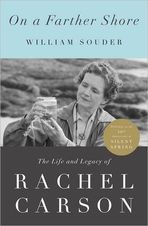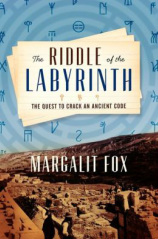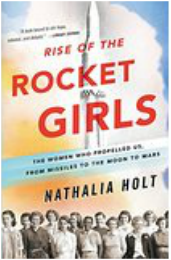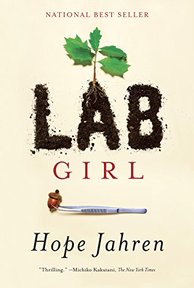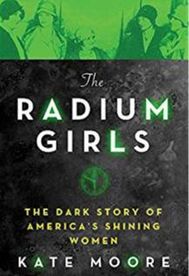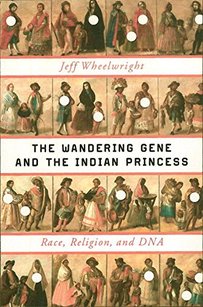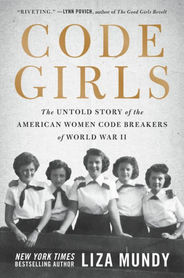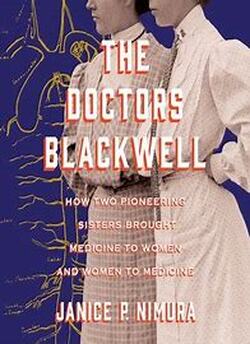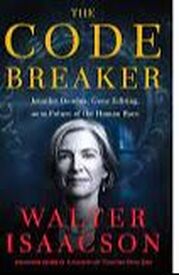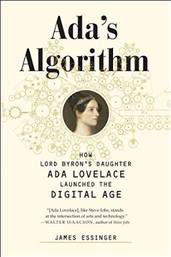
Terrific title and an interesting story of Augusta Ada Byron Lovelace, daughter of poet Lord Byron. She lived in a time when the contribution of a woman could be easily overlooked or discounted, though Ava was a strong person with an interesting life, even without the math connection. The early chapters delve intimately into the behavior of Lord Byron, which would be fairly scandalous by today's standards. Maybe I missed it, but I never did get exactly what the algorithm was--or maybe the explanation was too mathematical for my humanities-oriented brain. I thought there was going to be an "aha" moment concerning modern computers, but it never quite came.
Not that I'm complaining. Author James Essinger has a readable style and appears to have done his research well. His asides to the reader share points on which he differs from other experts, and why he has come to certain conclusions. He uses original l letters as well as many secondary sources to follow Ada from her birth (1815) through her sometimes precarious but privileged child hood of music lessons and mathematics tutors, on through adulthood. She was still expected to marry young and marry well, but even as a married woman she carried on a primarily professional correspondence with the much older Charles Babbage, "the man generally credited with inventing the computer."
Suggest this to readers looking for a thoughtful and slightly offbeat biography of an interesting woman -- a specific interest in math or computers is not necessary.
Reviewed by Maggie Knapp
Not that I'm complaining. Author James Essinger has a readable style and appears to have done his research well. His asides to the reader share points on which he differs from other experts, and why he has come to certain conclusions. He uses original l letters as well as many secondary sources to follow Ada from her birth (1815) through her sometimes precarious but privileged child hood of music lessons and mathematics tutors, on through adulthood. She was still expected to marry young and marry well, but even as a married woman she carried on a primarily professional correspondence with the much older Charles Babbage, "the man generally credited with inventing the computer."
Suggest this to readers looking for a thoughtful and slightly offbeat biography of an interesting woman -- a specific interest in math or computers is not necessary.
Reviewed by Maggie Knapp
Ada"s Algorithm
James Essinger
2014
James Essinger
2014
Rise of the Rocket Girls
Nathalia Holt
2016
Nathalia Holt
2016
|
If you bake the career of a scientist with a moving coming-of-age story, and add in a slapstick buddy comedy road trip, it turns into a moving story about the lives of people and plants. The story is told on the foundation of a unique and dedicated relationship that forms the heartwood.
How is that people who were not born into our family become family to us? While ostensibly a memoir of Jahren, the stand-out character is her companion in the lab and the field, Bill. Just as good scientific research leads to more questions than answers, the stories that Jahren selects for the book make you want to know the characters even more. Jahren writes with a level of self-awareness and humility that is refreshingly honest. I realize that "refreshing honesty" is a cliché, but that's the first description of tone that comes to mind. The account bypasses self-deprecating humor in favor of humble introspection and insight. Some of the biggest connections that the reader make with Jahren are through the trees that she studies, as our struggles for existence aren't that different. She spends little time on triumphs, and tells the stories of the struggles, many of which which seem to be more fun and worthwhile in the long run. Gerald Durrell's My Family and Other Animals is kindred to Lab Girl. Durrell's story is a set of vignettes as a boy in the greek island of Corfu, as he learned more about nature, including ourselves. Jahren's story replaces the Greek island with a richer set of vignettes that take her from her childhood in Minnesota, through college, grad school, a series of faculty positions in search of an equilibrium. She makes plants sound a lot more interesting than Durrell's exploration of bugs. Reviewed by T McGlynnon |
Lab Girl
Hope Jahren
2016
Hope Jahren
2016
|
In the same vein as "Hidden Figures", this history of the female codebreakers that contributed significantly to the progress of WWII is long overdue. The author interviewed a number of the codebreakers and their families and researched the topic extensively when the previously classified information was finally declassified. The codebreakers were sworn to silence while employed and for many years afterwards; in most cases their husbands and families had no idea of the importance and complexity of the job the young women were doing during the war. It was generally believed that they had fulfilled some menial clerical function.
The author incorporates personal information from a number of the "code girls" and factual information on many others. Women were responsible for many of the most important code breaking accomplishments during the war, and their efforts definitely helped the U.S. to win the war on both fronts. They actually learned of the Japanese surrender before many in the government and military did! Women were recruited from colleges and universities, and many had been trained as teachers, one of the few occupations available to educated women at the time. They underwent extensive screening and training to ensure that they were fit for the work. They arrived in Washington, D.C. in droves and were housed in hastily constructed rather Spartan accommodations. The work was scheduled 24 hours a day, and housing was so limited that it wasn't uncommon for multiple girls to use the same bed. They were housed and fed, and provided with a wage that was more than any of them could ever had made as teachers; nevertheless their pay rate was still 25-30% less than men doing the same work. It was an exciting time to be in the Capitol, and the women also had lively social lives, some of them being courted by multiple men in uniform and all of them maintaining a steady correspondence with one or more men who were serving the country. The technical information relating to the strategy and tactics of code breaking was quite detailed, but somewhat inscrutable to me so I skimmed quickly some of those sections; suffice it to say that it required an extreme amount of organization, attention to detail, a mathematical orientation, razor sharp memories and ability to see patterns, both small and large. I found the book quite riveting, with enough personal detail to enliven the story, and enough technical detail to establish just how serious and demanding their work was. I can definitely imagine that a movie will be made of this exciting and interesting chapter in our nation's history. reviewed by Jill Clardy |
Code Girls
Liza Mundy
2017
Liza Mundy
2017
The Doctors Blackwell
Janice Nimura
2021
Janice Nimura
2021
|
The Code Breaker
Walter Issacson 2021 |
Doudna is an interesting woman due to the fact that she is really quite “normal” in her brilliance for bio chemistry. I was struck by her genuine affection for her co-workers that’s evidenced in the included photos as well as some of the lengths she went to helping her competition. She states that money is not her motivation but “publish or perish” is ingrained in most academics and even that seems to be under developed in Jennifer. THAT will become an issue...
Parts of this formidable volume read like a thriller. There’s intrigue, court battles, and friends with misunderstandings. Part Seven consists of 5 chapters that discuss the issues of ethics as relates to DNA and changing the structure of life, ordering the structure of life. Who has the right? Who controls the rights? Is it right at all? These are supremely serious questions that should be considered be every adult. Reviwed by Linda Galllea |
